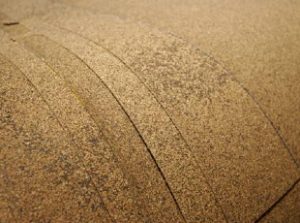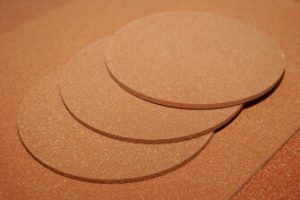Home » Technical » Additional Materials » Cork Gaskets
Cork or Cork-and-Rubber
Advantages of Cork Gaskets
 Cork is a versatile, natural and economical material for gaskets. Among the first materials to be used for sealing purposes, cork remains a popular sealing material for many industrial, construction, and other applications because of its many useful properties.
Cork is a versatile, natural and economical material for gaskets. Among the first materials to be used for sealing purposes, cork remains a popular sealing material for many industrial, construction, and other applications because of its many useful properties.
Web Seal can recommend the best cork gaskets or cork composite material for your specific sealing application.
Properties of Cork
Environmentally Friendly
A 100% sustainable material, cork is the harvested bark of the cork oak tree, native to southwest Europe and northwest Africa. The harvesting process occurs without cutting down any trees. It is also non-allergenic and a nontoxic substitute for petrochemical-based insulation materials. Cork completely biodegrades and is easily recycled without generating toxic deposits.
Impermeable
Thanks to its chemical makeup with cell walls made of a waxy substance, cork gaskets are essentially impervious to gases and liquids, especially water, ozone and many oils. Cork ages without degradation due to this resistance to moisture.
Low Density and Elastic
Due to its honeycomb cell structure half-filled with air, cork is naturally lightweight and buoyant. Because the membranes of cork cells are both flexible and strong, the air trapped inside is not released when compressed. This closed-cell structure provides excellent flexural (bend) strength and resilience for cork gaskets and die-cuts. A layer of cork can be compressed to half its thickness and regain its original shape when the load is removed. This ability to not deform appreciably under pressure gives cork a near-zero Poisson’s ratio (incompressibility), so that even after years of compression cork can maintain airtight sealing. Cork is the only solid that does not swell on one side if the other is compressed.
 Low Conductivity
Low Conductivity
The chemical structure of cork provides a significantly low conductivity to noise and vibration, making it useful in acoustic applications and anti-vibration seals. Cork is also fire retardant, burning without toxic emissions or flame. It is reliable in thermal insulation, automotive, and aerospace applications.
Abrasion Resistant
Cork’s unique molecular structure is also responsible for its exceptional resistance to friction and impact. It has a high friction coefficient, whether wet or dry.
Cork-and-Rubber Composites
While natural cork has a lower temperature threshold than some elastomers (approximately 275°F/135°C maximum - see elastomer properties) and can be susceptible to mold and acids, mixing elastomeric binders with cork offers a much wider range of possibilities for cork gaskets. Composite cork gasket material incorporates a variety of elastomers, designed to offer better heat, solvent and fuel resistance. One of the most popular is cork/neoprene composite but Buna, EPDM, nitrile, silicone, and a variety of other composites are available, including recycled rubber. Composites can be used for everything from low-pressure gasket and seal applications such as lining and facing material to high stress environments in transportation, power generation and other critical applications.

